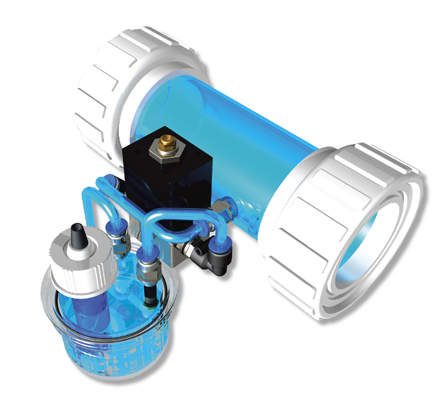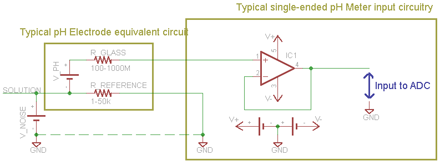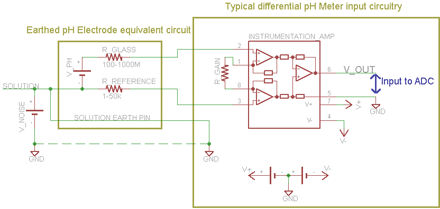Main Menu

Ionode is Australia's largest manufacturer of swimming pool sensors and has been at the forefront of sensor development since 1972. Your enquiries for OEM partnerships, custom development and our replacement sensor range are welcome.
Why Invest with Ionode
- 50 years of industry experience and chemistry knowledge
- Proven product reliability to save you money
- Australian made, tried, tested and trusted
- In-house R&D, production and design
- Ask for a free technical consultation
OEM Solutions & Custom Sensors
Hand-crafted Precision - Made in Australia
In both our product developments and our distribution relationships, the Ionode brand is highly respected and sought for delivering the value, precision and durability expected in today's demanding commercial environments. Delivering those same valuable principles in business relationships is of prime importance, so Ionode offers a dedicated R&D team, outstanding QC procedures and products that work over and over to save you time and money ... With Ionode inside, you're in very good hands.
Ionode has developed an outstanding reputation over 45 years for supplying intelligent solutions to Original Equipment Manufacturers (OEM) and other companies requiring expertise in analytical and electrochemistry. Ranging from specialised labelling right through to fully customized sensors, fittings and a prototyping service, many manufacturers faced with limited resources and high overhead costs are meeting their product and profitability objectives by partnering with Ionode. The Ionode Tech Team work in partnership with all customers from the initial design stage, right through to post-production to ensure customer satisfaction at all phases of product development. Working closely with developers, manufacturers, researchers, distributors and end users to ensure they have the product they need at competitive prices, OEM customers include manufacturers of instruments, electrochemistry devices, swimming pool controllers, water and waste-water control and monitoring, cathodic protection operations, hydroponics facilities, laboratories, research facilities and more. Areas of expertise include pH, RedOx (ORP), Ion Selective applications (ISE), conductivity, cyclic voltammetry and other areas of analytical and electrochemistry.
Ionode offers full-service capabilities covering end-to-end contract manufacturing, in-house R&D, project
management and qualified technical support, so for a free technical consultation about your project, contact us to learn how Ionode can assist with your objectives.
Applications
Rely on Ionode products for any of the following applications:
- Laboratories of all types
- Environmental Research
- Process Control
- Swimming Pool Control and Dosing
- Research and Educational Facilities
- Water and Wastewater Treatment
- Chemical Manufacturing
- Mining
- Petro-chemical
- Agriculture, Horticulture, Aquaculture
- Electroplating and Etching
- Boilers and Cooling Towers
- Pulp and Paper Manufacture
- BioMedical / BioTechnology
- Medical
- Pharmaceutical studies
- Vaccine production
- Protein analysis
- Blood plasma studies
- Meats / Smallgoods
- Food / Beverages / Wine / Cheese / Dairy
- Many many more …
Free Technical Consultation
Call Ionode for a confidential discussion about your project needs … Our chemistry experts and R&D Team may be able to save you a lot of time and money.


Inline Sensors for Pool & Water Treatment Combined Sensors/Screw-in/Integrated
Whether in swimming pools, process control or other inline applications, reliability is everything and Ionode’s reputation for robust and reliable sensors has been well documented since 1972. Ionode offers multi-parameter sensors with up to four parameters in one sensor, direct replacement models for other brands and a custom sensor service to build to your own specifications ... all with reliability beyond the norms of other manufacturers.


Troubleshooting
Electrical interference problems are complex and cannot be easily presented in this forum. Noise, pH or ORP offset voltage, optical isolation and solution earth, differential amplifiers, single ended amplifiers, amplifier input impedance > 1x1012 Ohms and much more make this a job for experts ... discuss your needs with the Ionode Tech Team.
If you’re having technical difficulties with issues such as electrical interference, refer to this informative discussion extracted from a previous case...
.... the pH side of the probe develops a stable voltage between its output and the solution, which is dependent on the pH of the solution. The purpose of the Ag/AgCl reference then is to develop a stable voltage with respect to the solution, so you can complete the circuit and get the pH value. You can’t just use say a piece of metal as the reference because they develop a redox potential and the voltage isn’t stable. The way an ORP probe works is just that it measures the redox potential by having a piece of metal (typically platinum) in the solution, and it’s referenced to the Ag/AgCl reference in the probe.
Often in pools and industrial control applications a noise voltage develops between the solution and electrical earth. We assume that this happens because of poorly constructed pools, faulty pumps, or even static build up on the PVC pipes; however it's not something we or the controller manufacturer typically has control over and so we have to work around it.
The circuit diagrams should help explain the problem. The typical pH meter and electrode is shown in the 1st diagram. They use a single-ended amplifier for the pH signal. The pH electrode's reference is tied to the ground of the circuit, and so the voltage between them is assumed to be 0mV. When the ground of the pH circuit is otherwise untied, there is no problem, because it simply floats to the potential of the solution and there is no noise voltage applied across R_REFERENCE. For example, this is what happens when using a battery-powered handheld meter.

However, typical pool/control installations have a fixed power source which ties the ground potential to the same ground as the noise source, or another fixed potential with respect to the noise source. This in turn forces a noise voltage across R_REFERENCE which has a direct effect on the pH reading. Often the noise voltage is high enough to exceed the common mode input limits of the amplifier as well, causing it to saturate and even be damaged in some situations. In addition the extra current flowing through the electrode's reference polarises the reference giving another error source.
One solution to the problem is shown in the 2nd diagram. A differential instrumentation amplifier is used instead of the single-ended amplifier. The solution noise voltage is reduced to near 0 by the low resistance solution earth connector directly connected to the circuit ground; and the amplified voltage is now correctly the voltage between the pH and reference instead of the voltage between the pH and ground. Instrumentation amplifiers also typically have much better common mode rejection than traditional operational amplifier configurations.

Recommended is the TI INA116 instrumentation amplifier and other manufacturers also have amplifiers which are suitable. There are likely other techniques that solve the problem as well - for example one could design their own instrumentation amplifier; or use optical isolation. The key specifications for pH amplifiers are that the input impedance is much higher (typically 1000x) than the electrode resistance, so as a rule the input impedance should be greater than 1x1012 ohms (at 25C); and for the same reason the input bias current must be very low, as a rule less than 5pA (at 25C). Be aware that the resistance of a pH electrode doubles with every 6~10C drop in temperature and so lower temperatures require better performance from the amplifier.

